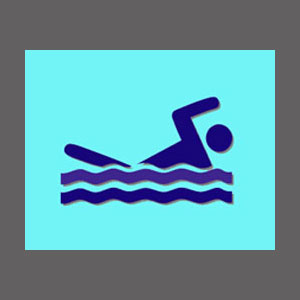
Swimming for spinal stenosis is a form of exercise therapy that will do nothing to address the structural changes which have occurred inside the spinal canal. Despite this shortcoming, swimming still might still provide some very tangible benefits for many affected patients, including improved physical function and even marked pain relief.
It is well known that I am an avid swimmer and I am pleased to be able to detail how swimming might be an indicated form of physical therapy for stenosis sufferers. However, I will also provide the counterpoint in this essay, clearly demonstrating the limitations of any form of spinal stenosis exercises as being curative modalities.
Swimming for Spinal Stenosis Efficacy
Any exercise therapy will come up short when compared to an actual curative treatment modality. Exercise is great, but let’s face it, it will never resolve actual spinal stenosis. These structural changes can not be undone by any physical activity and may require invasive medical intervention in some instances.
Exercise therapy can also be painful for some patients, particularly those with drastically limited ranges of motion and those who have substantial pain upon movement. While swimming is one of the gentlest forms of exercise, it may still be too much for some patients to bear.
Finally, any type of physical therapy is often prescribed for severe stenosis simply to pave the way for a surgical solution. In some patients, doctors like to try conservative care first, just to see what will happen. Meanwhile, in others, a history of failed conservative care might be required in order to gain health insurance coverage for a major surgical event.
Swimming Health Benefits
Swimming is a fantastic physical activity which can soothe the soul, as much as improve the body. Swimming is a vigorous, yet gentle workout, which can be accomplished by virtually anyone, at any age. Swimming can be relaxed, for patients who require minimal strain, or extremely strenuous, for patients who require a real physical challenge. In my own experience, there is no single activity which provides the same degree of full-body workout.
Swimming will help keep patients with symptomatic stenosis more functional and will help to maintain movement, range of motion, strength, and conditioning.
Finally, swimming might actually help to correct some misdiagnosed stenosis concerns when it brings marked relief. In many patients, minor stenosis is blamed for causing pain, when all along another structural or nonstructural condition is the true causation. If this source resides in the muscles, such as imbalances, localized injury or oxygen deprivation, then swimming is likely to bring terrific, but temporary relief. This holds true for virtually any form of exercise therapy.
If this scenario represents your experience, then it might be worth considering that another process may be the actual symptomatic culprit, with the stenosis being circumstantial. It would not hurt to get a new diagnostic opinion to be sure.
Swimming for Spinal Stenosis Conclusion
I have lived my entire life being incredibly physically active. I am a drummer, a martial arts instructor, a fitness trainer and a swimmer. I love exercise and always try to impart this love to my students and friends. However, I also respect the limits that spinal stenosis can cause in the anatomy and know that some patients find it difficult to be active. Swimming might be a great possible solution for these people, since it is really a wonderfully gentle form of exertion. The water takes pressure off the spine and supports the body through a full range of motion. No other exercise can claim this benefit.
To learn more about how swimming might be beneficial to you, regardless of the cause of your pain, speak to your physical therapist. Tell them that you want to become more active, but need to do it safely to prevent yourself from injuring your spine or escalating your symptoms.
Spinal Stenosis > Spinal Stenosis Exercises > Swimming for Spinal Stenosis





